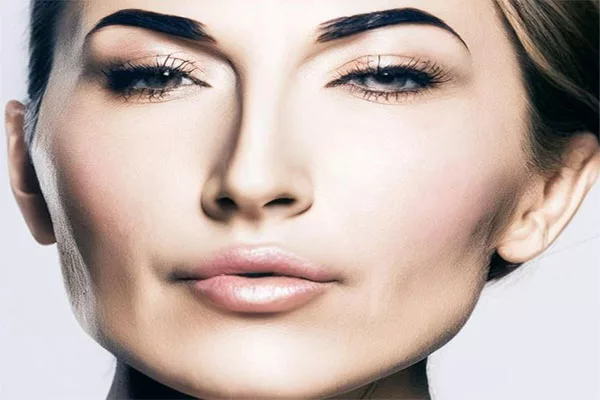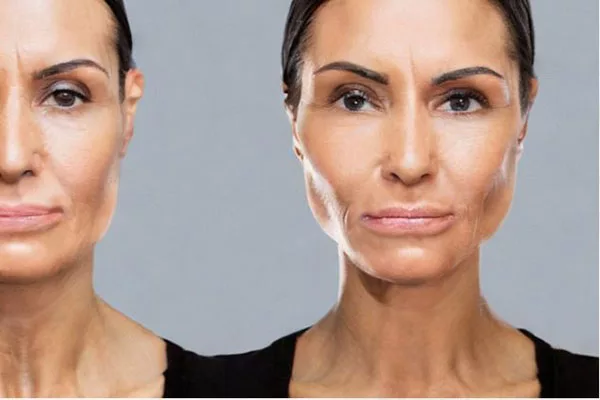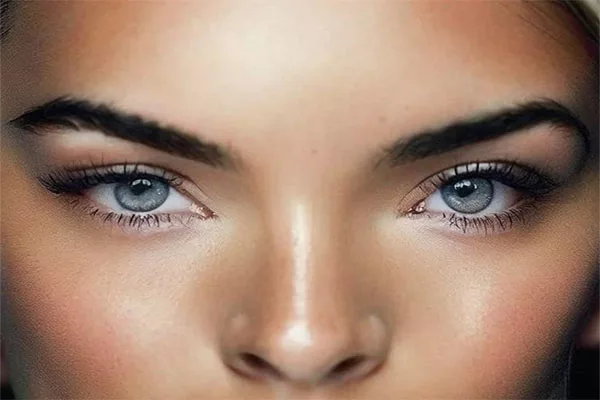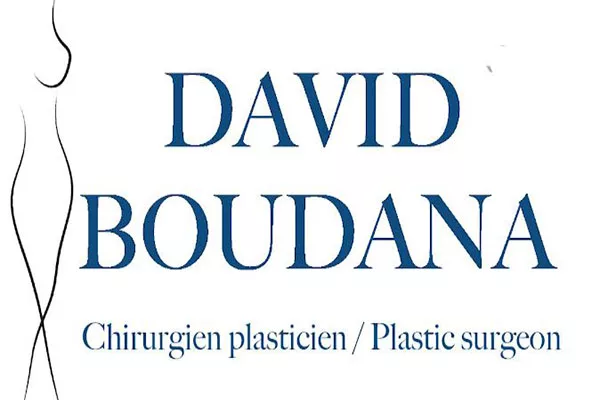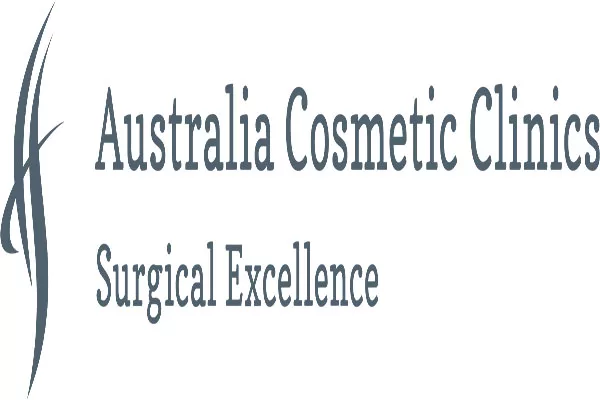Fillers (Lip/lines)
Introduction
Dermal fillers have become increasingly popular in recent years, particularly for enhancing lips and reducing the appearance of fine lines and wrinkles. However, it’s important to understand what fillers are and how they work before deciding to undergo the procedure. In this article, we’ll explore the world of fillers, discussing the different types available, the potential risks and benefits, and what to expect during and after the procedure.
Types of fillers
There are several different types of fillers that are commonly used for cosmetic procedures. Each type has unique properties that make it more effective for certain areas and concerns:
- Hyaluronic acid fillers: These fillers are made from a naturally occurring substance in the body and are used to add volume and plumpness to the skin. Popular brands include Juvederm and Restylane.
- Calcium hydroxylapatite fillers: These fillers are made from tiny calcium particles suspended in a gel-like solution. They stimulate collagen production and can be used for deeper wrinkles and folds. Popular brand names include Radiesse.
- Poly-L-lactic acid fillers: These fillers stimulate collagen production and are used for more severe wrinkles and volume loss. They can take several weeks to show their full effects. Sculptra is a popular brand.
- Polymethyl-methacrylate microspheres (PMMA) fillers: These fillers are made from tiny beads that are suspended in a gel-like solution. They provide longer-lasting results than other fillers but require several injections over time. Bellafill is a popular brand.
The procedure
Getting fillers typically involves a straightforward procedure that can be done in a doctor’s office or medical spa. Before beginning, the treatment areas will be cleaned and a topical numbing cream may be applied to minimize discomfort. The procedure itself involves injecting the filler beneath the skin using a fine needle or cannula. The number of injections will depend on the area being treated and the type of filler being used.
The procedure usually takes around 15-30 minutes to complete, although this can vary depending on the extent of the treatment. After the injections, the treatment areas may be gently massaged to distribute the filler evenly. Ice may also be applied to reduce swelling and bruising. Patients can usually return to their daily activities immediately following the procedure.
It’s important to note that while fillers are generally considered safe, there are potential risks and side effects that should be carefully considered before undergoing the procedure.
Potential risks and side effects
Like any medical procedure, fillers come with a risk of potential side effects and complications. While serious complications are rare, patients should be aware of the following possible side effects:
- Bruising and swelling: These are the most common side effects and usually resolve within a few days.
- Allergic reaction: Although rare, some patients may experience an allergic reaction to the filler material. Symptoms can include swelling, redness, and itching.
- Infection: While rare, there is a risk of infection at the injection site.
- Lumps or nodules: In some cases, the filler material can clump together and create small lumps or nodules beneath the skin.
- Skin discoloration: In rare cases, the treatment area may become discolored, especially if the filler material is injected too close to the skin’s surface.
- Numbness or pain: Some patients may experience numbness, tingling, or pain at the injection site.
It’s important to discuss these potential risks with your doctor and ensure that you have a full understanding of what to expect before undergoing the procedure.
Results and longevity
The results of fillers can vary depending on the type of filler used, the injection technique, and individual factors such as metabolism and lifestyle. Generally, you can expect to see results immediately after the procedure, with full results appearing within 1-2 weeks.
Most fillers last between 6-18 months, although results can be longer-lasting with certain types of fillers. Factors that affect the longevity of fillers include the area treated, the amount of filler used, and individual factors such as smoking or sun exposure.
To maintain the results of fillers, patients will typically need to undergo touch-up treatments or follow-up injections over time. Your doctor can help you determine the best treatment plan for your individual needs.
Preparation and aftercare
To ensure the best results from your filler treatment, it’s important to follow certain preparation and aftercare guidelines. Here are some tips to keep in mind:
- Avoid blood-thinning medications or supplements for at least a week before the procedure to minimize bruising.
- Avoid alcohol for at least 24 hours before the procedure to reduce the risk of swelling.
- Avoid sun exposure and tanning for at least 24 hours before the procedure.
- After the procedure, avoid touching or massaging the treated area for at least 24 hours to allow the filler to settle.
- Apply ice to the treated area as needed to reduce swelling and bruising.
- Avoid strenuous exercise or activities that could cause excessive sweating for at least 24-48 hours after the procedure.
- Avoid alcohol and hot beverages for at least 24 hours after the procedure.
- Follow the instructions provided by your doctor for aftercare and any recommended follow-up treatments.
- Be sure to contact your doctor if you experience any unusual symptoms or side effects after the procedure.
By following these guidelines, you can ensure the best possible outcome from your filler treatment.
Choosing a provider
When it comes to getting fillers, choosing the right provider is essential to achieving safe and effective results. Here are some tips to help you choose the best provider for your needs:
- Look for a board-certified dermatologist or plastic surgeon who has experience and expertise in administering fillers.
- Check the provider’s credentials and verify that they are licensed and insured.
- Read reviews and testimonials from other patients to get an idea of the provider’s reputation and track record.
- Schedule a consultation with the provider before the procedure to discuss your goals and expectations and ask any questions you may have.
- Don’t be swayed by deals or discounts, as these are not always a sign of quality care.
- Trust your instincts and choose a provider who makes you feel comfortable and confident in their abilities.
By taking the time to choose a qualified and experienced provider, you can have peace of mind knowing that you are in good hands.
Who is a good candidate for fillers?
Fillers are a suitable option for many individuals looking to enhance their appearance or address signs of aging. Good candidates for fillers generally:
- Are in good overall health and free of any medical conditions that could increase the risks of complications.
- Have realistic expectations about the results of the procedure.
- Are bothered by the appearance of lines, wrinkles, or volume loss in specific areas of the face.
- Are not pregnant or breastfeeding.
- Have not had any recent facial surgery or other procedures that could affect the results of fillers.
- Are willing to follow the preparation and aftercare instructions provided by their doctor.
Ultimately, the best way to determine whether you are a suitable candidate for fillers is to schedule a consultation with a qualified provider. They can evaluate your individual needs and help you make an informed decision about your options.
Alternatives to fillers
While fillers can be an effective way to enhance your appearance and reduce the signs of aging, they are not the only option available. Here are some alternatives to consider:
- Botox: Botox is a neurotoxin that is injected into the muscles to reduce the appearance of wrinkles and lines. It is particularly effective for dynamic wrinkles, such as those caused by facial expressions.
- Laser resurfacing: Laser resurfacing is a procedure that uses a laser to remove the outer layers of skin, revealing smoother, younger-looking skin underneath.
- Chemical peels: Chemical peels involve applying a chemical solution to the skin to remove the outer layers and promote the growth of new, healthy skin.
- Microdermabrasion: Microdermabrasion is a non-invasive procedure that uses a special applicator to remove the outer layers of skin and stimulate collagen production.
- Facelift: A facelift is a surgical procedure that involves lifting and tightening the skin to reduce the appearance of sagging and wrinkles.
It’s important to discuss your options with a qualified provider to determine the best course of action for your individual needs and goals.
Conclusion
Dermal fillers can be a safe and effective way to enhance your appearance and reduce the signs of aging. By understanding the different types of fillers available, the potential risks and benefits, and what to expect during and after the procedure, you can make an informed decision about whether fillers are right for you.
Remember, choosing a qualified and experienced provider is essential to achieving safe and effective results. By following the preparation and aftercare guidelines provided by your doctor, you can ensure the best possible outcome from your treatment.
If you are interested in fillers or other cosmetic procedures, be sure to schedule a consultation with a qualified provider to discuss your options and determine the best course of action for your individual needs and goals. With the right care and attention, you can achieve the youthful, vibrant appearance you desire.
References:
1. American Society of Plastic Surgeons. (n.d.). Facial rejuvenation with injectable fillers. Retrieved from https://www.plasticsurgery.org/cosmetic-procedures/dermal-fillers?sub=Facial+Rejuvenation+with+Injectable+Fillers
2. American Society of Plastic Surgeons. (n.d.). Soft tissue filler safety. Retrieved from https://www.plasticsurgery.org/cosmetic-procedures/dermal-fillers/safety
3. Mayo Clinic. (2019, September 12). Dermal fillers: What you need to know. Retrieved from https://www.mayoclinic.org/healthy-lifestyle/adult-health/in-depth/dermal-fillers/art-20045748
4. American Society for Dermatologic Surgery. (n.d.). Cosmetic filler injections. Retrieved from https://www.asds.net/skin-experts/skin-treatments/cosmetic-filler-injections”
Filler in neck
Dark circles under eyes
Lip fillers
| This page is not advice and is intended to be informational only. Consult your physician before undertaking any surgical procedures. |
Most famous clinics
Marina Plastic Surgery
Dr. Grant Stevens
is the founder and Medical Director of Marina Plastic Surgery and The Institute; A Medical Spa in Marina Del Rey, California.
USA 4560 Admiralty Way Suite 256
Marina Del Rey, CA 90292
Phone : 310-494-2881
Nazarian Plastic Surgery
Dr. Sheila Nazarian
MMM is a Board Certified Plastic Surgeon and the founder of Nazarian Plastic Surgery and Spa26 in Beverly Hills.
USA 120 S. Spalding Dr. #315,
Beverly Hills, CA 90212
Phone: (310) 773-3039
Westlake Dermatology
Westlake Dermatology is a national leader in dermatology and plastic surgery. Our specialization in minimally invasive procedures.
USA 2201 Onion Creek Parkway
Austin, Texas 78747
Phone: 512-649-3376
Central Scottsdale Surgery Center
Dr. Remus Repta
Dr. Repta, our founder, is widely recognized for his exceptional skills, and the quality and artistry of his surgical work.
USA 3271 N Civic Center Plaza #105,
Scottsdale, AZ 85251
Phone:(855) 377-3782
Forest Hill Institute Of Aesthetic Plastic Surgery
Dr. David Boudana
Dr. David Boudana, a board certified plastic surgeon, is a graduate of the prestigious University of Paris Descartes.
Сanada 1188B Eglinton Avenue West
Toronto, Ontario
Phone:(416)785-7864
Australian Cosmetic Clinics
Dr. Shaz Musavi
Dr Shaz is a fully trained Cosmetic Surgeon who brings his extensive aesthetic background and professionalism.
Australia Suite 1, 448 Pacific Highway
Artarmon, NSW 2064
Phone: 1300 559 848
